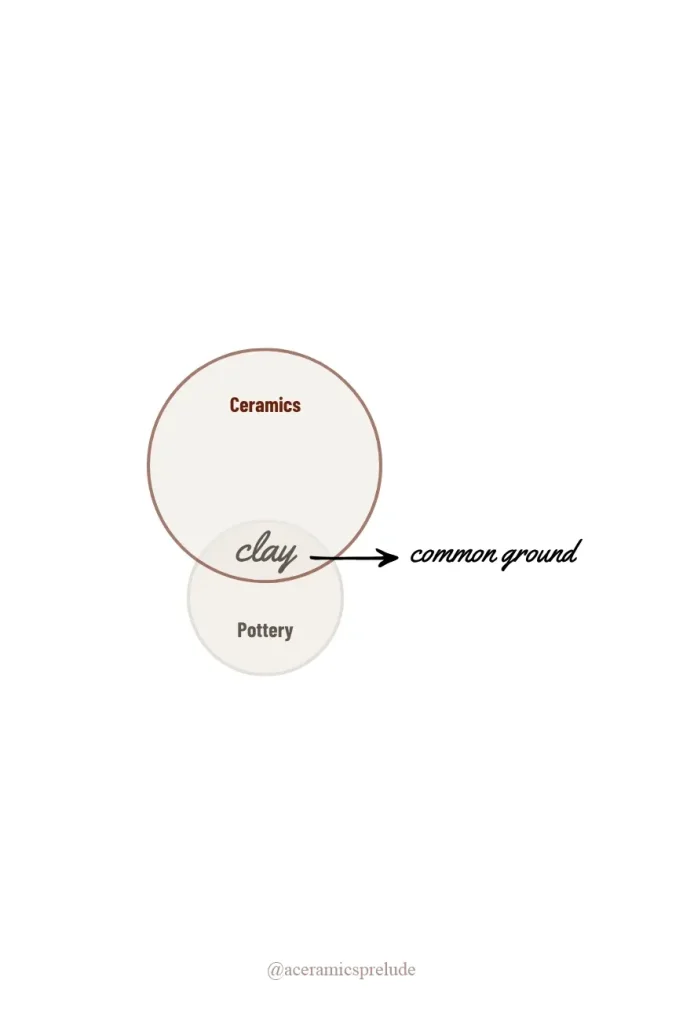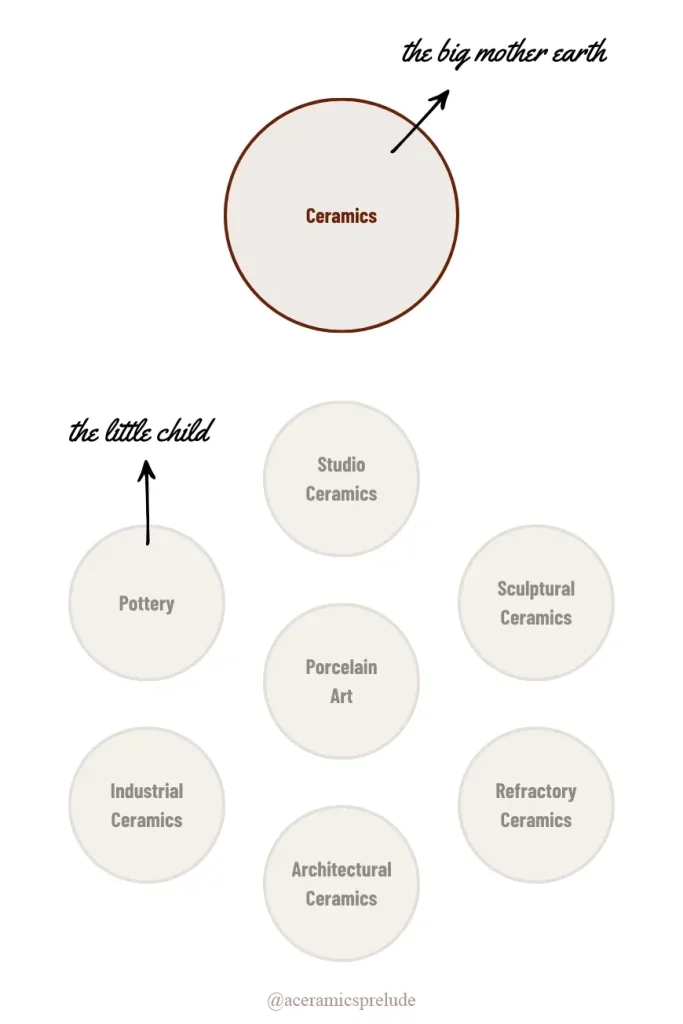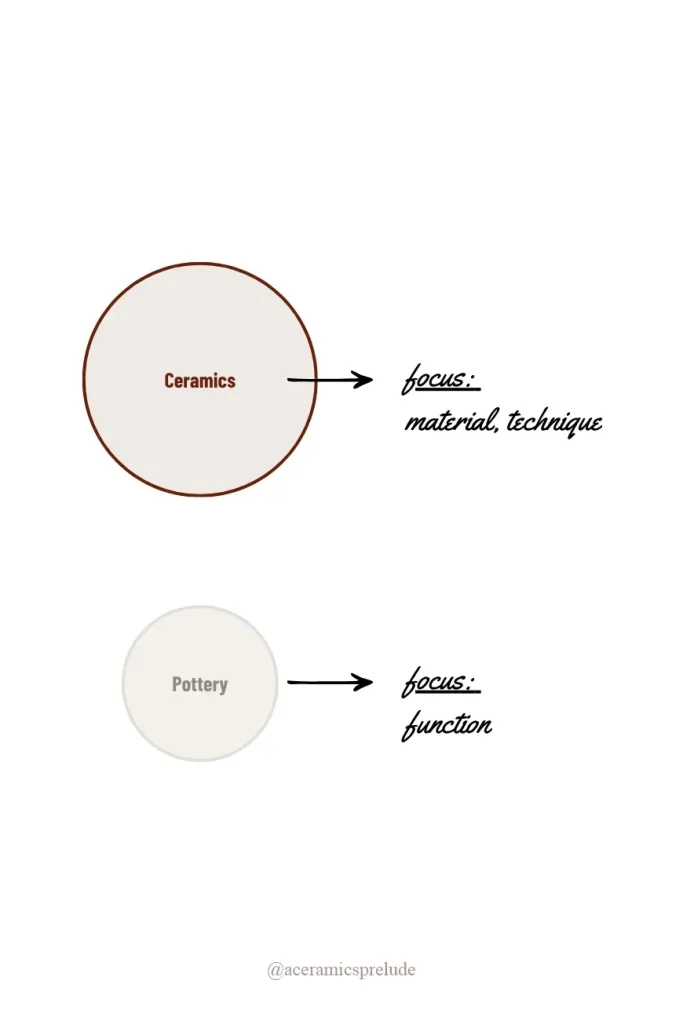It has taken me forever to finally figure out the plain difference between ceramics and pottery.
Is this ceramics? Is this pottery? Aren’t they the same? Shall I call myself a ceramicist or a potter? (Between us, just call me Liz). I wanted a straight answer, but every explanation only pulled me deeper into a fog of clay jargon and half-truths. What I needed was a proper breakdown with real examples.
So here it is: clear, illustrated and finally making sense (to me at least).
Ceramics and Pottery: same clay, but different purpose
Both ceramics and pottery involve shaping some sort of earthy mud (yes, that’s clay), then firing it until it becomes something solid (and hopefully beautiful).
They share that common ground. That’s especially where the confusion begins.
Let’s break it down, step by step: what exactly is ceramics, what exactly is pottery, and how to finally spot the difference.
Spoiler: function, intention and even the end user – that’s where the paths diverge.


What is Ceramics?
On paper
Ceramics is the big umbrella. The focus here is on:
- material (what it’s made of)
- technique (how it’s fired)
but NOT necessarily on function (what it’s used for).
As you can instantly see in the diagram, ceramics spans a wide range of branches – with pottery being just one of them. That’s the key distinction.
For a deeper dive into each ceramics branch with concrete examples, head over to the dedicated article
→ Ceramics: Beyond Pottery, a visual guide to its full spectrum
Real-life examples
Sculptures, tiles, sinks, toilets (yes, you read properly), decorative wall pieces that cost more than your rent: all ceramics.
And indeed, that includes pots (as in pot-tery).
What is Pottery?
On paper
Pottery is one of the specific branches of ceramics. Hence, the focus here is on:
- function (what it’s used for)
- function (how it serves)
- function (the job it’s meant to do in daily life)
Other ceramics branches may also serve specific functions – like architectural or refractory ceramics – but what sets pottery apart is its intimate, domestic role: cups, bowls, jars, dishes. Objects made to be used, touched, lived with.

Real-life examples
Everyday vessels, mugs, bowls, plates, jugs, vases designed to actually hold flowers and not just existential symbolism.
Pottery’s purpose is use – eating, drinking, pouring, storing. Eventually, think tableware and kitchenware. Even if your scrumptiously posh gold-glazed cup lives on its shelf forever, if it could be used, it still counts as pottery.
Ceramics or Pottery: quick recap
Here’s your cheatsheet
All pottery is ceramics, but not all ceramics are pottery.
One final quizz to go?
A vase that holds flowers > pottery
A vase-shaped sculpture that holds only meaning > ceramics
A dish for olives > pottery
A tiled mural of dishes of olives > ceramics
A teapot with a lid and handle > pottery
A sculptural teapot that leaks or can’t pour > ceramics
A ramekin used to bake crème brûlée > pottery
A ceramic lamp base > ceramics
A toilet? Technically (industrial) ceramics. Let’s just not call it a pot!
